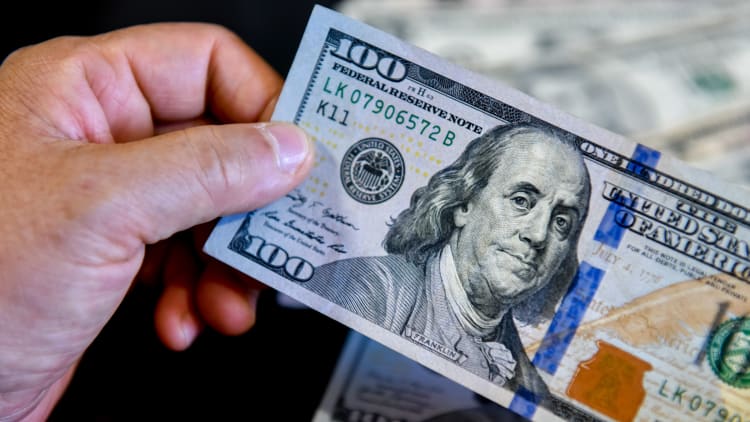The Federal Reserve will spend $931.4 million to print bills in 2023 — but there's a problem with U.S. cash.
"We haven't modernized or changed our currency. That's probably a mistake," Aaron Klein, senior fellow of economic studies at Brookings Institute, told CNBC. "We should have dollar coins instead of paper notes."
Physical currency has been updated around the world but not in the U.S., and while an increasing number of Americans are ditching cash for electronic payments, experts say cash isn't going away.
"The rest of the world has moved toward basically polymer notes, which are a form of plastic which lasts something like four times as long as the old paper notes," said Douglas Mudd, curator and director of the American Numismatic Association.
In 2017, the $100 bill surpassed the $1 bill as the most popular currency denomination. Some speculate that the rise in $100 bills in circulation may be to avoid taxes or for illegal activity.
"The $100 comes from the U.S. currency being a global currency. And a lot of those hundreds are outside the country and they're being used for store of value," said Franklin Noll, Federal Reserve Bank of Kansas City Payments Specialist.
Accessibility has also determined what bills and coins get circulated in the U.S. The $2 bill is rarely seen, yet it remains in circulation. Meanwhile, bills such as the $500, $1,000 and $5,000 were discontinued in 1969 because they were rarely spent.
"The $2 bill has lost its place in everyday usage more than anything else, because … it was left out of the vending machine market. For denominations like the $2 bill or the half dollar coin, because there was no space made in the actual cash registers, they became less popular and less used. … In the 1960s, the half dollar lost its place because it wasn't included in the use of parking meters," said Mudd.
Watch the video to find out more about U.S. currency.



